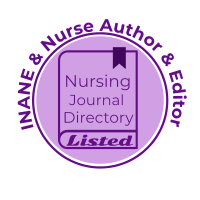Patient caregiver preferences on discharge instructions from the Alberta Children’s Hospital Emergency Department
DOI :
https://doi.org/10.29173/cjen184Mots-clés :
discharge instructions, pediatrics, emergency medicineRésumé
Background: Greater than 90% of children who visit a pediatric emergency department (ED) are discharged home. Effective discharge teaching is an opportunity to provide caregivers with the information that they need to provide care for their child at home, ensure appropriate follow-up, and achieve the best outcomes for the child. Discharge instructions should be in a format that families will find accessible and useful, and not result in unnecessary healthcare system costs. As a new electronic health record is being adopted in our ED, this is an opportune time to optimize and standardize discharge instructions.
Methods:
The study design was an anonymous, self-reported, 10-item cross-sectional survey in the ACH ED. Caregivers of patients aged 0-17 years were eligible to complete the survey and approached consecutively during shifts selected by availability of the project lead. Families who required an interpreter to communicate in English were not approached to complete the survey; instead, this was recorded to reflect those who would require translated resources. A sample size of 100 caregivers was chosen to provide a 95% confidence interval of +/- 10%. Survey questions covered preference of discharge instruction modality (verbal, print, electronic, or combination) and likelihood of using instructions if given in print or electronic format. We asked the caregiver’s primary language spoken at home and whether they would be able to use English-language resources. Finally, we tested the caregiver’s ability to use QR codes with a question that could only be answered after successfully accessing a QR code. The project was exempted from research ethics board review due to its classification as quality improvement.
Descriptive analysis was performed, including calculations of proportions and confidence intervals. Results were analyzed using IBM SPSS software.
Results: Of the 117 caregivers approached, 104 completed the survey (89%). Caregivers had a strong preference for written discharge instructions, with 98% supporting either electronic or printed resources in addition to verbal instructions, as opposed to verbal only. There was similar interest for both printed and electronic resources with the likelihood of utilizing that modality being reported as 75% and 79%, respectively.
Three percent of families were unable to complete the survey due to a language barrier. Of the 104 completed surveys, 19% noted that their primary spoken language at home was not English. Nonetheless, 100% of participants who did not primarily speak English but were able to complete the survey reported that they would use English-written discharge resources.
Eighty percent of the participants were able to successfully use the QR code and provide a correct answer to the test question. Of those who could not access the QR code, several reported that their inability was due to devices needing to be charged.
Advice and Lessons Learned
- Caregivers of patients in our ED have a strong preference to receive discharge instructions in writing, whether printed or electronic.
- There was not a significant difference in preference for electronic versus paper written instructions.
- Some families will require translated resources, though many who do not speak English at home would still be able to use English resources. This does not diminish the importance of providing discharge instructions in a family’s preferred language.
- QR codes could be an effective tool for distributing electronic resources for most families, but there is still a sizeable proportion of families who are unable to use a QR code.
Téléchargements
Publié-e
Comment citer
Numéro
Rubrique
Licence
© Michelle Fric, Jennifer Thull-Freedman 2022

Cette œuvre est sous licence Creative Commons Attribution 4.0 International.
The Canadian Journal of Emergency Nursing is published Open Access under a Creative Commons CC-BY 4.0 license. Authors retain full copyright.




